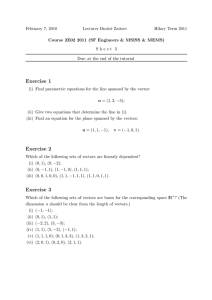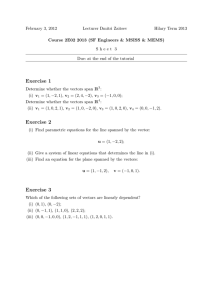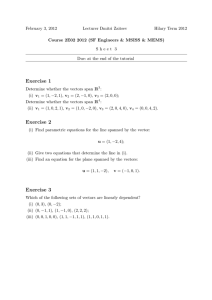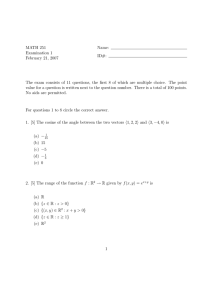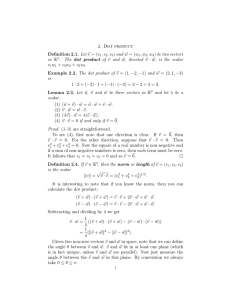FORMULAE The formulas involving cross product apply only to 3 dimensional...
advertisement
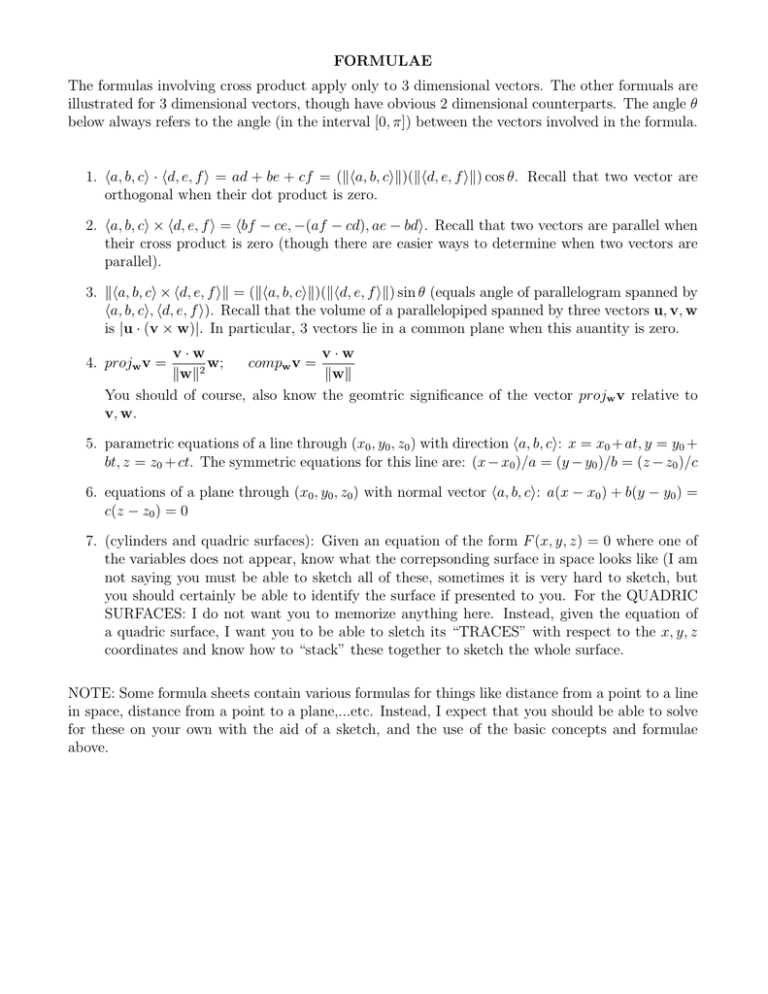
FORMULAE The formulas involving cross product apply only to 3 dimensional vectors. The other formuals are illustrated for 3 dimensional vectors, though have obvious 2 dimensional counterparts. The angle θ below always refers to the angle (in the interval [0, π]) between the vectors involved in the formula. 1. ha, b, ci · hd, e, f i = ad + be + cf = (kha, b, cik)(khd, e, f ik) cos θ. Recall that two vector are orthogonal when their dot product is zero. 2. ha, b, ci × hd, e, f i = hbf − ce, −(af − cd), ae − bdi. Recall that two vectors are parallel when their cross product is zero (though there are easier ways to determine when two vectors are parallel). 3. kha, b, ci × hd, e, f ik = (kha, b, cik)(khd, e, f ik) sin θ (equals angle of parallelogram spanned by ha, b, ci, hd, e, f i). Recall that the volume of a parallelopiped spanned by three vectors u, v, w is |u · (v × w)|. In particular, 3 vectors lie in a common plane when this auantity is zero. v·w v·w w; compw v = 2 kwk kwk You should of course, also know the geomtric significance of the vector projw v relative to v, w. 4. projw v = 5. parametric equations of a line through (x0 , y0 , z0 ) with direction ha, b, ci: x = x0 +at, y = y0 + bt, z = z0 + ct. The symmetric equations for this line are: (x − x0 )/a = (y − y0 )/b = (z − z0 )/c 6. equations of a plane through (x0 , y0 , z0 ) with normal vector ha, b, ci: a(x − x0 ) + b(y − y0 ) = c(z − z0 ) = 0 7. (cylinders and quadric surfaces): Given an equation of the form F (x, y, z) = 0 where one of the variables does not appear, know what the correpsonding surface in space looks like (I am not saying you must be able to sketch all of these, sometimes it is very hard to sketch, but you should certainly be able to identify the surface if presented to you. For the QUADRIC SURFACES: I do not want you to memorize anything here. Instead, given the equation of a quadric surface, I want you to be able to sletch its “TRACES” with respect to the x, y, z coordinates and know how to “stack” these together to sketch the whole surface. NOTE: Some formula sheets contain various formulas for things like distance from a point to a line in space, distance from a point to a plane,...etc. Instead, I expect that you should be able to solve for these on your own with the aid of a sketch, and the use of the basic concepts and formulae above.

